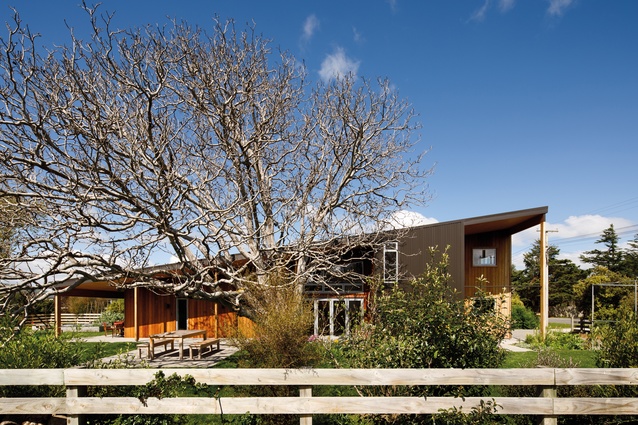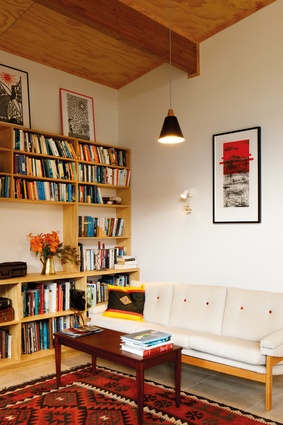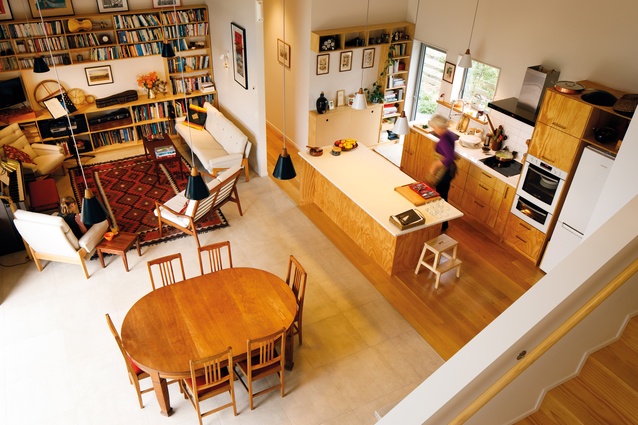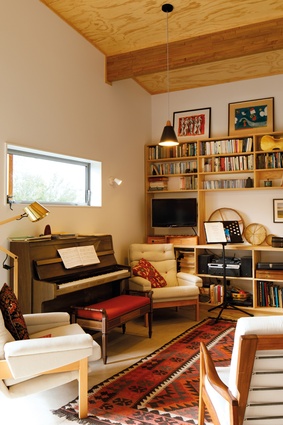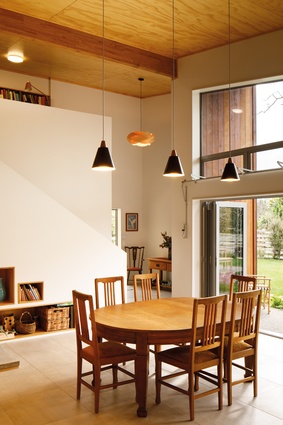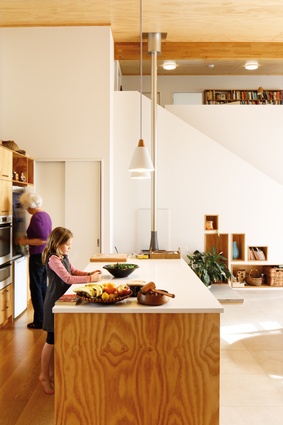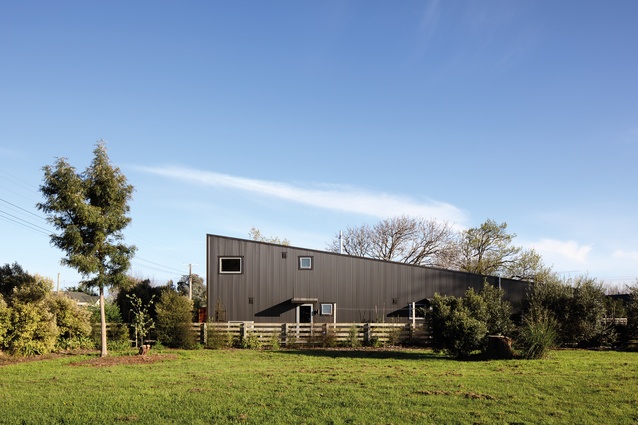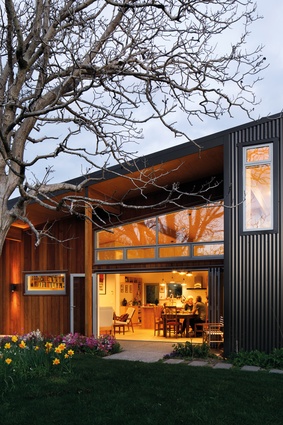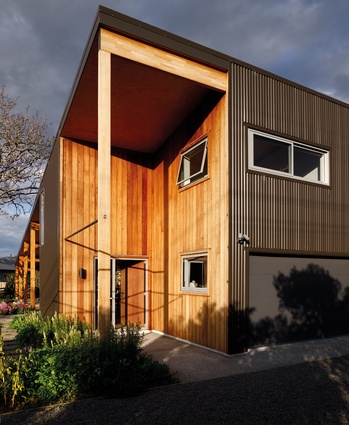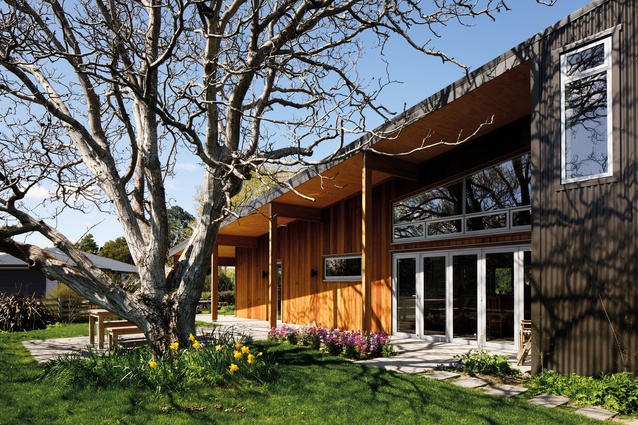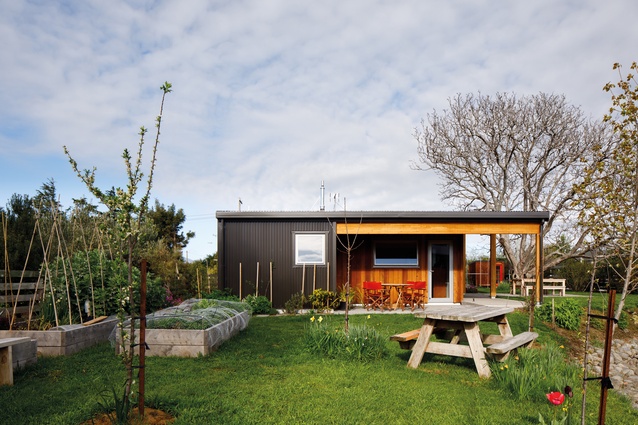Houses revisited: Wairarapa house
This home takes on a local rural vernacular, creating an impact in the small wine-making community of Martinborough. First published in 2017.
Set among a sextet of mass-produced houses in the rapidly growing Wairarapa town of Martinborough is a distinctive new home designed by an emerging Wellington architecture practice, First Light Studio.
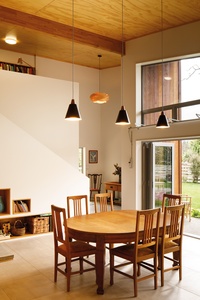
“The studio started in 2012 following the success of our first project [The Meridian First Light House, which took third prize in the US Energy Department’s Solar Decathlon, the Olympics of University Sustainable Architecture],” explains Nick Officer, a director at First Light.
“The Haybarn project took a few years to come to fruition. Initially we planned this house to be pre-fabricated, but the process was a bit fraught with high costs so we ended up doing a traditional build – but the house was designed to be a simple, modular structure.”
Inside, chunky glulam timber beams run at 3.6m intervals – slightly longer than the original pre-fabricated design, which allowed for the fitting of smaller panels in between.
“The building has grown a bit but it’s still a simple form; it’s really a box with bits cut out,” says Officer. A palette of simple materials is used: timber and corrugated sheet metal cladding and roofing. But, at this house, the real drama begins with the two double-height verandahs and the long sloping roof that runs from the back garden towards the street.
The design taps into the Kiwi rural vernacular – the shed form – and the way people live in Martinborough. “The climate is very hot in the summer and cold in the winter,” explains Officer. “Therefore, they have a lot of verandahs and living spaces that go between the inside and outside.”
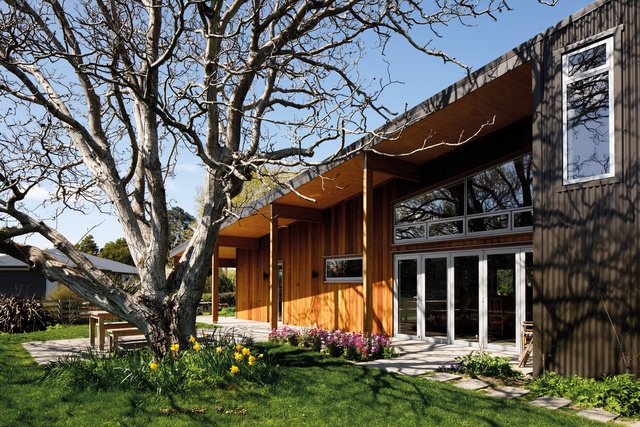
The site originally held two old walnut trees but one had to go to make way for the house; however, the remaining tree became integral to the design. “The tree loses its leaves in the winter so the sun can stream into the house but, when it is covered in leaves during summer, it protects the house from the hot sun,” he adds.
Environmental factors were also a key design imperative for both the clients and the architects. Hugh and Marion are a retired couple, so it was important that the architects provide them with a warm and healthy environment that would see them well into the future, considering aspects like accessibility so they can just live on the ground floor if necessary and leave the upper storey for guests.
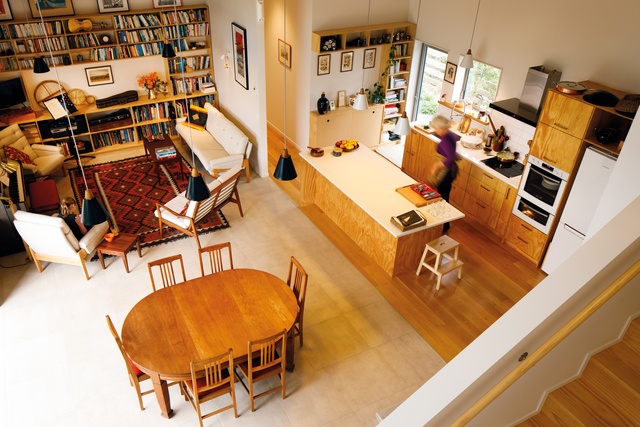
“The house is about as close as you get to a passive house,” says Officer. “It’s extremely thermally efficient and is heated by two under-floor slabs with piped water.” Hugh and Marion lived in Rotorua all their lives and loved their fireplace so they were keen to include one into the build. However, the place is so warm they’ve barely used it. Officer explains that “most people don’t understand that if you build a house well, it doesn’t need much heating.”
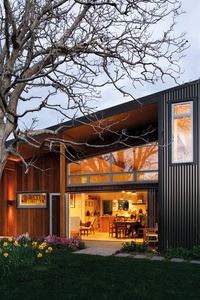
The First Light team had learnt a lot about designing super-efficient houses while designing their project for the Solar Decathlon, working closely with several professors from Victoria University of Wellington.
Another consideration for the design of the Haybarn is the fact that Hugh and Marion are both accomplished musicians, so the main living area needed to be flexible enough to accommodate the moving of furniture to enable informal concerts by their string quartet, with people able to look down onto performances from the mezzanine. It was also important to ensure the acoustics worked well and that this tall room gained a wonderful light quality – the high windows draws natural light throughout the space.
Working ‘for people’ is crucial to producing any good design. “We think about the day-to-day life of the inhabitants and try to understand how they live there,” comments Officer. “We designed the cut-out verandah at the back and side of the house so it enjoys the late sun as it goes around to the west.” Here, Hugh and Marion can enjoy a glass of Martinborough’s famous pinot noir under the walnut tree to create a perfect afternoon.
MATERIAL SELECTOR
First Light Studio’s Ben Jagersma and Nick Officer discuss the use of timber in the Wairarapa Haybarn.
Timber is central to this build. Why was it important?
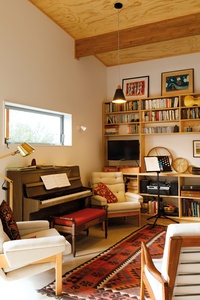
The owners, a retired couple, had lived in the same house in Rotorua for most of their married lives and it was set among a grove of redwood trees. We wanted to tie the house back to where they’d come from so incorporated a New Zealand-grown redwood timber, which is grown in the Hawke’s Bay and was milled in Wellington.
Why didn’t you use it throughout the build?
We used it in the important parts of the house where you break away from the box form – cutting into the verandah and the front entrance. For use, working on a small budget, it was a way to bring in a rich element where we can enjoy it, as opposed to just covering the whole house in the most expensive material we can find.
You also used New Zealand-sourced glulam beams inside the house.
Yes, they are integral to what is almost a post-and-beam structure, allowing us to easily cut into the verandah and entrance.
Click here to see more Houses Revisited. And sign up to our email newsletters to receive Houses Revisited straight to your inbox.
Note: These are stories from our archives and, since the time of writing, some details may have changed including names, personnel of specific firms, registration status, etc.

